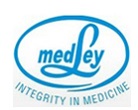Tablet Coating Uniformity……..Scientific approach
Coating of tablets is an important way to design properties of the final dosage form. The purposes for coating are manifold, e. g. taste masking, humidity protection, gastric resistance, modified release, active coating. In some cases the coating uniformity is critical for the intended use. Therefore, it is important to know coating uniformity of tablets can be achieved and analysed.
Several aspects have to be taken into account, namely,
- Intra-tablet coating uniformity,
- Inter-tablet coating uniformity, and
- Batch-to-batch coating uniformity.
The intra-tablet coating uniformity can be determined by different methods. One modern approach is the determination of coating thickness by Terahertz pulsed imaging. Several thousands measurements can be done to scan the total surface of a coated tablet. It turns out that the coating thickness is higher on the upper and lower surface compared with the central band. This has consequences for the modified drug release. From simulations the film distribution on the tablet surface can be estimated.
The inter-tablet coating uniformity can also be estimated from simulations. These simulations are the basis for machine and process optimization in order to minimize the tablet-to-tablet coating variability. In case of active coating the content uniformity is limiting the variability. While the inter-tablet coating uniformity is typically determined offline first attempts are made for inline measurements.
Not only the amount and distribution of coated material on the surface of a tablet can influence the product properties, but also the quality of the film. Tablets coated with the same amount of polymer can show different release profiles, because the film thickness differs due to different densities of the film. Thus, not only the film thickness is of importance but also the film structure.











